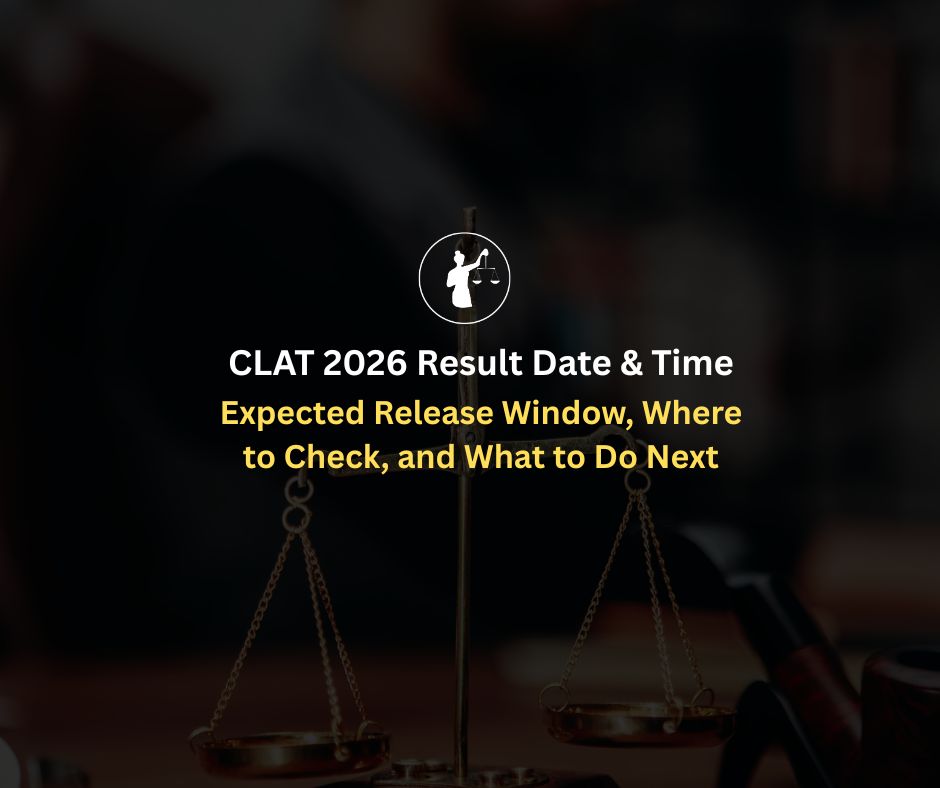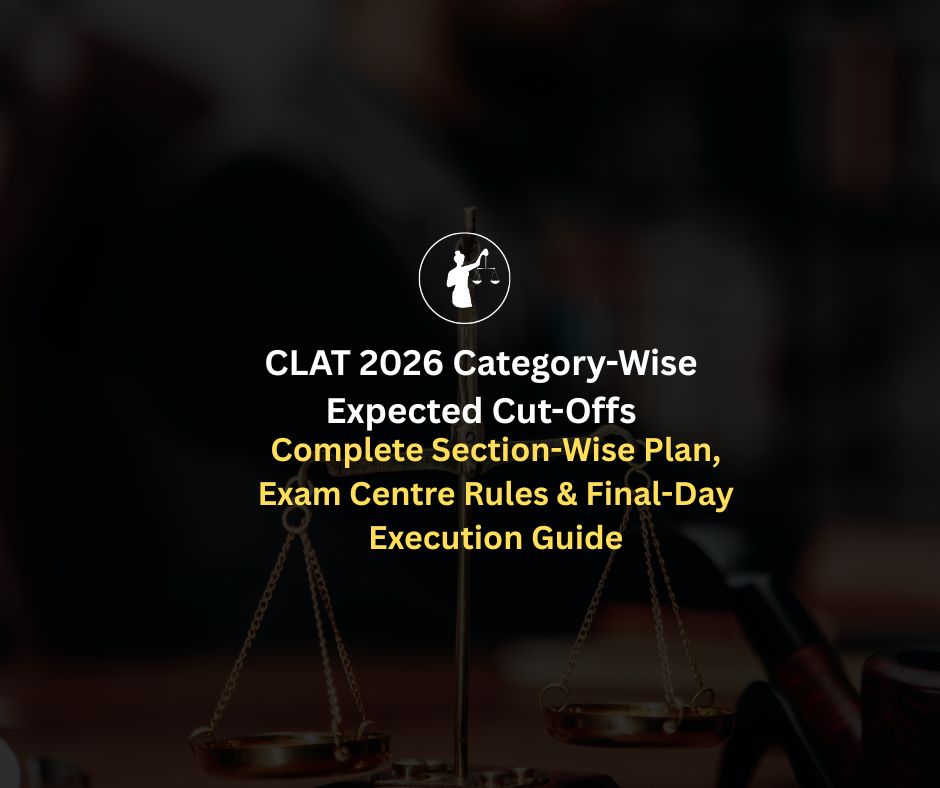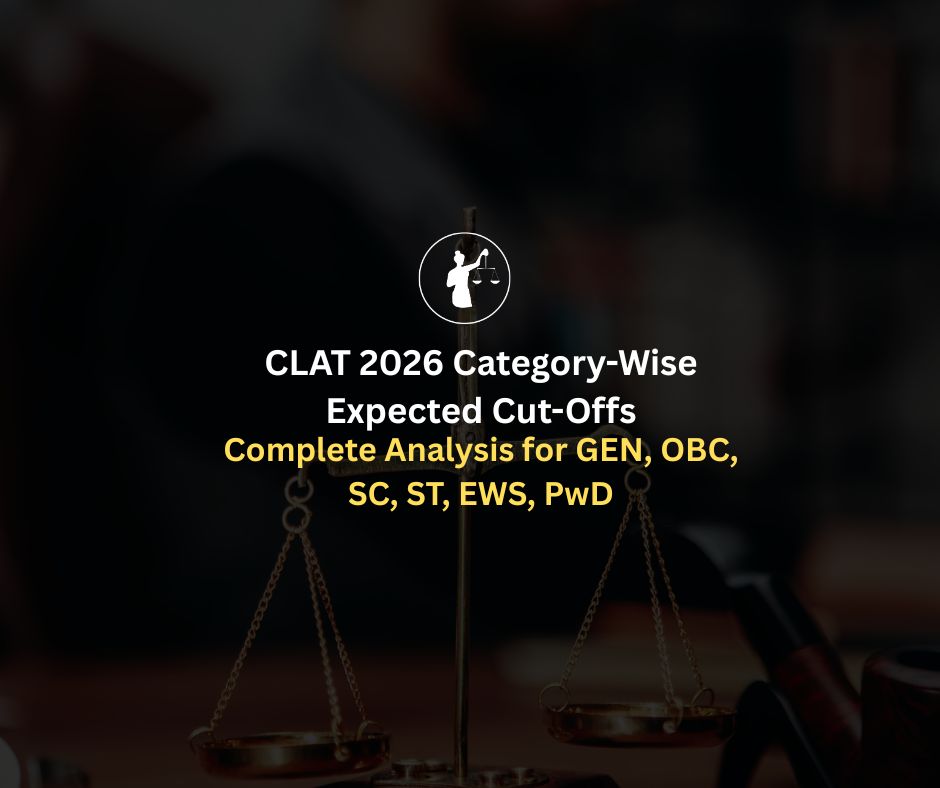
Introduction
Time, not syllabus, separates a CLAT topper from an average scorer. Every year, thousands of aspirants prepare sincerely but still miss top NLUs because they run out of time during the exam. CLAT is not just a knowledge test; it’s a test of decision-making under time pressure.
With 120 questions in 120 minutes, success in CLAT 2026 will depend on how efficiently you manage your minutes, not just how much you study. The most successful candidates master CLAT 2026 time management through smart planning, repetition, and control.
This blog offers proven CLAT preparation hacks, practical CLAT 2026 study tips, and insights from toppers who learned how to make every minute count.
Best CLAT Coaching Online 2026–2027 by NLTI
CLAT 2026 continues the 120-question pattern, equally dividing 120 minutes across five sections: English, Legal Reasoning, Logical Reasoning, Current Affairs, and Quantitative Techniques. However, the nature of these questions makes equal distribution impossible. Legal and Logical sections often consume over half the test time due to dense reading passages and layered reasoning.
In 2025, analysis from multiple student forums and educators showed that reading time, not question difficulty, was the biggest performance bottleneck. The paper rewarded those who practiced speed reading with comprehension accuracy.
For CLAT 2026, this means developing two abilities simultaneously: rapid comprehension and precise elimination.
1. Maximize attempts in high-scoring areas (Legal, Logical).
2. Minimize wasted time on traps.
3. Preserve mental stamina till the end of the paper.
Strong CLAT 2026 study tips now revolve around controlling pace and accuracy together, because consistency, not volume, decides rank.
Read More: Mastering Legal Comprehension Passages for CLAT
Divide your 120 minutes strategically:
60 minutes: Legal Reasoning + Logical Reasoning
40 minutes: English + Current Affairs
20 minutes: Quantitative Techniques
This split mirrors actual difficulty. Legal and Logical demand careful thought; GK and English rely on pre-learned understanding. Quant often includes 4–5 lengthy DI sets, requiring quick selection rather than full solving.
CLAT preparation hack: Use initial mocks to find your “natural pace.” Adjust this ratio slightly if you’re faster in some sections, but never spend more than 65 minutes on reasoning.
Each passage (typically 400–500 words) must be solved in under three minutes. Break your approach into micro-steps:
First 30 seconds: Skim for the theme.
Next 90 seconds: Read carefully, mark the rule or argument.
Last 60 seconds: Attempt questions.
By training this rhythm, your brain automatically processes structure and inference faster. Over time, your “mental stopwatch” aligns with CLAT 2026 time management targets.
Many students lose valuable time by re-reading confusing passages. The smart approach is selective confidence. Attempt what you know first; skip uncertain ones and return later.
The skip-mark-return technique,an essential CLAT 2026 study tip,ensures momentum. Toppers consistently report that question sequencing improved their score more than extra study hours.
Read More: How to Create an Effective Daily Study Plan for CLAT
Small changes multiply. Saving half a minute per passage can recover 10–15 minutes across the paper. Those minutes often decide 5–7 extra correct answers, your potential jump from 90 percentile to 98.
These CLAT preparation hacks are designed for cognitive efficiency, not shortcuts. They improve your accuracy while saving time.
Read More: Top 10 CLAT 2026 Prep Mistakes and How to Avoid Them
You can’t improve what you don’t measure. Mocks are your training ground for time control.
CLAT 2026 time management in mocks should follow these steps:
1. Replicate the real slot: Same time of day, same pressure environment.
2. Set non-negotiable timers: No pausing or second-guessing.
3. Analyse after every mock: Note time per section, per passage, and per error type.
Follow the 1:1.5 ratio, for every 1 hour of testing, spend 1.5 hours analysing. Identify whether time was lost in reading, decision-making, or execution.
Top CLAT performers confirm that “mock review time” delivers more improvement than mock count. Remember: effective CLAT 2026 time management is learned after mocks, not during them.
Read More: How Online CLAT Courses Transform Exam Preparation
Your daily routine shapes your test stamina. Here are actionable CLAT 2026 study tips rooted in productivity psychology:
Pomodoro CLAT Strategy: Study for 25 minutes, break for 5. After four cycles, rest for 30 minutes. This trains your focus span to match exam rhythm.
Morning Focus Rule: Attempt Legal or Logical sections early morning when cognitive clarity is highest.
Micro Time Audits: Track wasted minutes, social media, chatting, random revision, and reduce 15% weekly.
Weekly Reset: Every Sunday, spend 30 minutes assessing what slowed you down last week. Plan fixes for the next.
These techniques prevent burnout while sustaining sharp focus for months, key to the best time management for CLAT 2026.
Read More: Online vs Offline CLAT 2026 Coaching: Which Is Better?
Think long-term: time management isn’t daily alone; it’s cyclical.
Weekly Plan:
3 full-length mocks + 3 sectional tests.
1 day purely for review and weak-topic reinforcement.
Monthly Plan:
Week 1–2: Concept building (Legal & Logical).
Week 3: GK compilation + Reading drills.
Week 4: Mock + Analysis Week (improvement sprint).
These cycles refine both knowledge and timing. Treat every fourth week as your diagnostic checkpoint.
These pitfalls appear minor but collectively cost dozens of marks. Effective CLAT 2026 preparation techniques balance intensity with rest.
Read More: CLAT 2026 Guide: Exam Structure, Syllabus & Eligibility
Top mentors across NLUs emphasize one core truth: your brain can only work as fast as it has trained.
Here’s what they recommend:
Track every section’s timing: Make a “speed chart” to monitor performance improvement.
Simulate back-to-back sessions: Practice Legal + Logical + GK in a single sitting twice a week.
Avoid perfection paralysis: Focus on accuracy consistency over total attempts.
Read for endurance: Four editorials daily improve reading stamina for the real test.
Use backward timing: Start mocks by allocating time per question, not per section,
to enhance pacing control.
Mentors agree that mental endurance, not intelligence, drives CLAT results.
At NLTI, time efficiency is built into the teaching model. The platform uses structured mentorship and analytical tracking to turn CLAT 2026 time management into a measurable skill.
Mock Feedback Loop: Every student’s mock performance is analysed by NLSIU-trained mentors,
who identify seconds lost per question and teach correction methods.
Falcon Batch: This batch offers real-time time-allocation workshops, speed drills,
and reading optimization sessions, all designed for faster decision-making.
Legal Bootcamps: Intensive Legal Reasoning programs reduce reading-to-answer time by up to 30%.
Personalized Study Planners: Track daily learning time, ideal pace,
and adaptive improvements per section.
GK Booster 4.0: Saves hours of preparation by condensing 2000+ key facts into a timed,
revision-friendly format.
Peer Performance Analytics: Students benchmark their average timing against national
data, creating a healthy competitive metric.
The goal: turn your preparation from passive study into data-driven practice. NLTI ensures every second of your preparation reflects in your rank.
Read More: CLAT 2026 vs Previous Years: Key Patterns Emerging
Mastering CLAT 2026 is not about studying harder it’s about controlling your rhythm. Each minute on the clock is an opportunity to make a clear decision, not a random guess. The top 1% of aspirants don’t just solve faster; they think cleaner and recover time smarter.
A strong CLAT 2026 time management plan, combined with reliable CLAT preparation hacks, builds that control. Plan your days, record your timing, and measure progress weekly.
Remember, the gap between a 95 and 99 percentile scorer is often 10 well-managed minutes.
With NLTI’s guidance, live mentorship, mock analysis, and data-backed study tracking, you can make those 10 minutes your competitive edge.
Transform time pressure into performance. With discipline, feedback, and the right CLAT 2026 study tips, every second can push you closer to your dream NLU.
1. How much time should I give daily for CLAT 2026 preparation?
Ideally, 4–6 focused hours daily are enough if used efficiently. Follow a structured CLAT 2026 time management routine—2 hours for Legal and Logical, 1.5 for GK and English, and 30–45 minutes for Quant and revision.
2. What is the most effective time management strategy for CLAT 2026?
The best time management for CLAT 2026 is the 60–40–20 rule, dividing time among reasoning, verbal, and quantitative sections. Combine it with daily CLAT preparation hacks like the 3-minute passage rule and skip-mark-return method.
3. How can I improve reading speed for CLAT 2026 passages?
Practice one editorial daily from The Hindu or Indian Express using a timer. Focus on summarizing in 2 lines. This simple CLAT 2026 study tip builds speed and comprehension for long Legal and Logical passages.
4. How many mocks should I attempt for effective CLAT 2026 time management?
Take at least 30–40 full mocks and 50 sectionals before the exam. Analyse each mock for section-wise timing errors. Mocks are essential for refining real-time CLAT 2026 preparation techniques.
5. How can I reduce time pressure during the actual CLAT 2026 exam?
Build familiarity with exam timing by replicating the same slot conditions during mocks. Use breathing breaks every 30 questions to reset focus, one of the most underrated CLAT preparation hacks for calm performance.
6. Is it better to focus on accuracy or attempt all questions in CLAT 2026?
Accuracy matters more. Aim for 90–100 well-attempted questions instead of rushing through all 120. High accuracy under a good CLAT 2026 time management plan ensures better percentile growth.
7. How does NLTI help students master time management for CLAT 2026?
NLTI integrates CLAT 2026 study tips directly into its curriculum through live speed drills, mock-analysis mentorship, and personalized planners. The Falcon Batch and Legal Bootcamps teach practical CLAT time-saving strategies proven to boost real exam performance.





